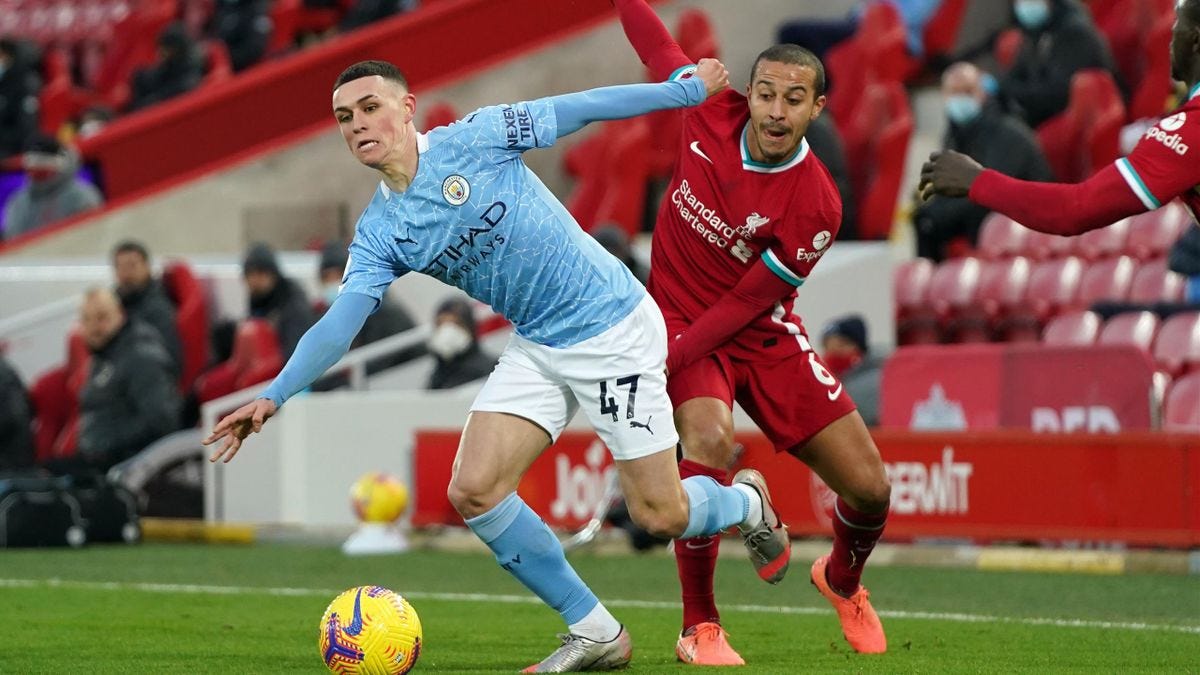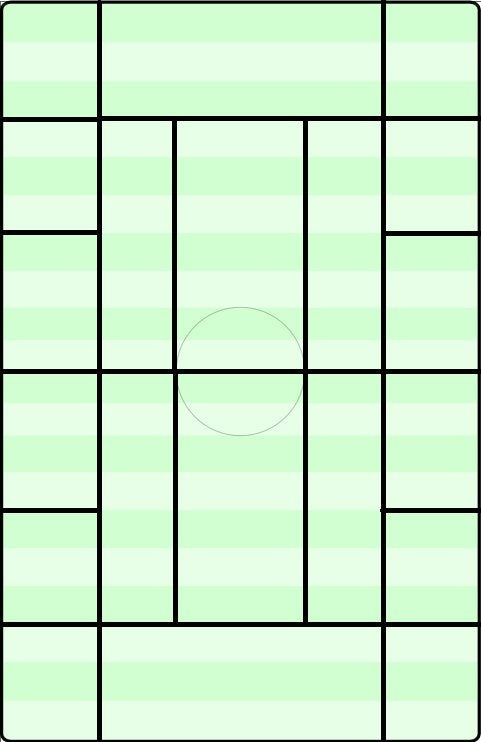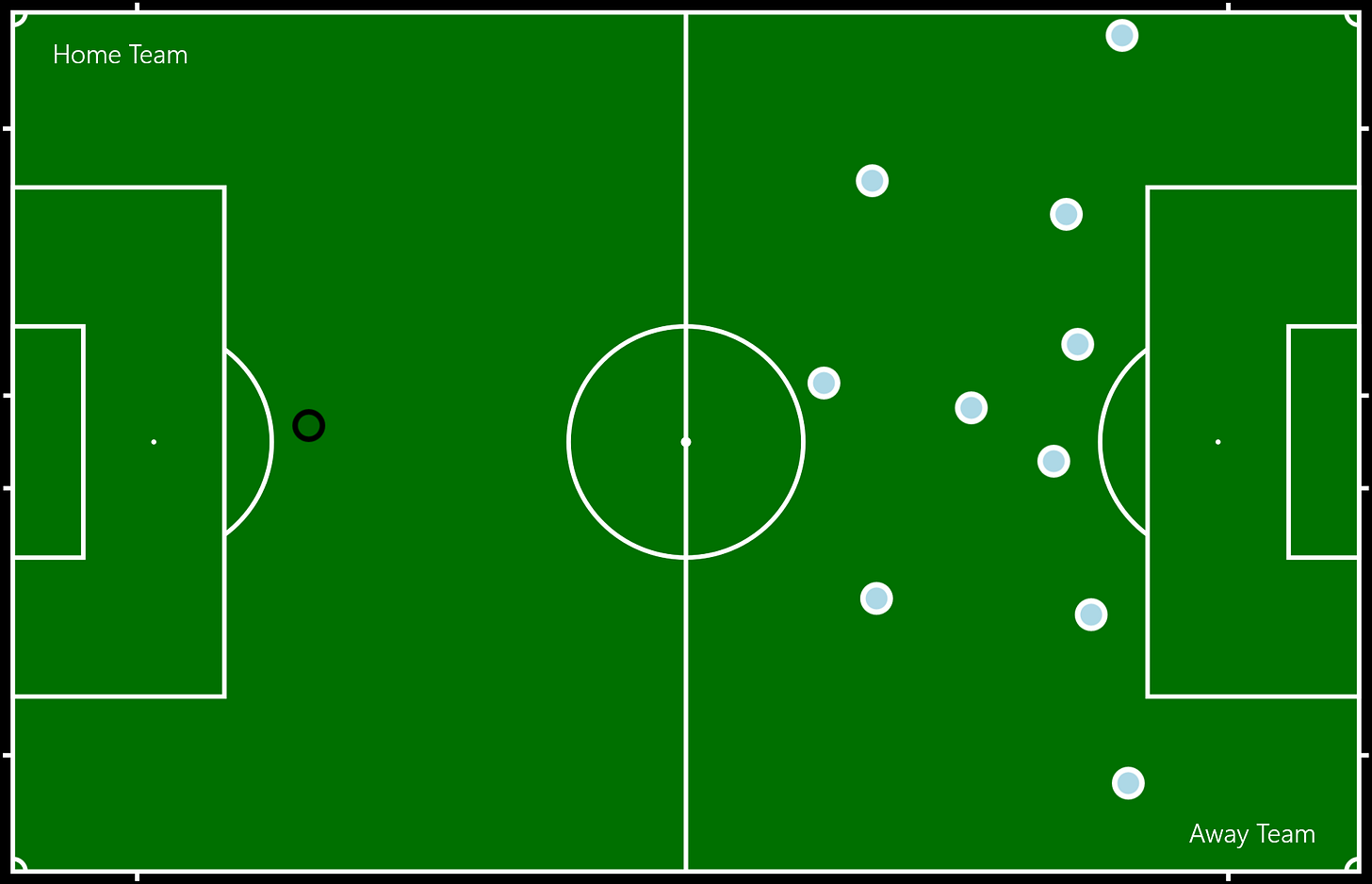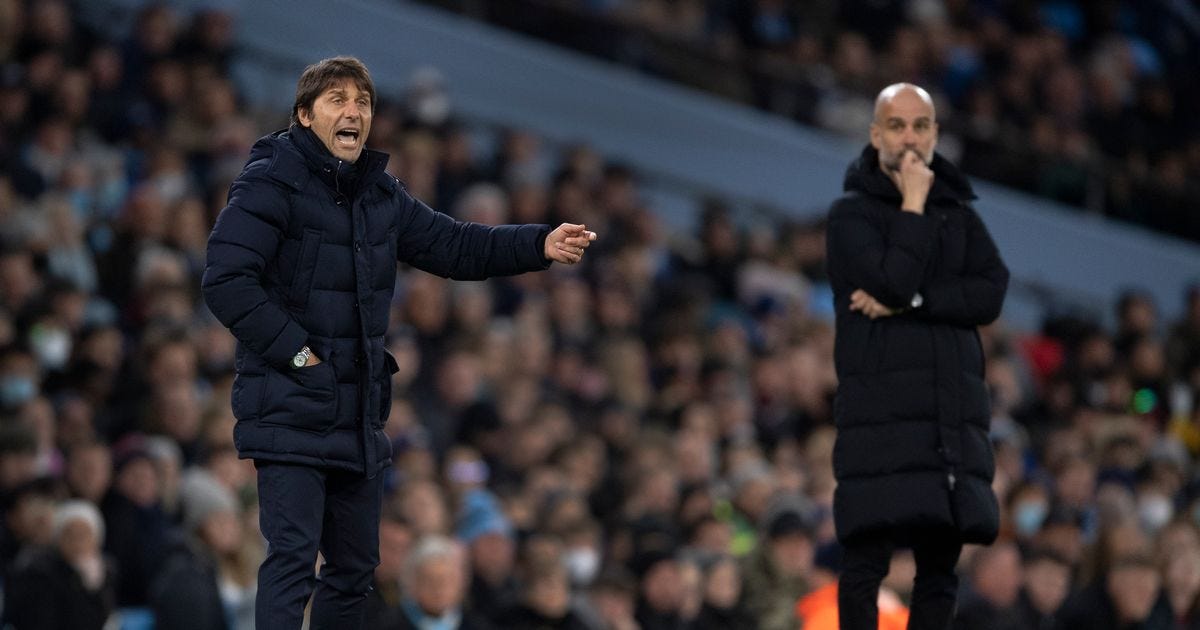The Shape of Football
footballing ideations pilot chapter— a think on football terminology and tactical variations
Football terminology is weird.
Across the board, there are ideals that permeate the collective consciousness of the sport. But today I want to focus on one single concept—the idea of “shapes” in football.
People talk about tactics, but when you look at it, tactics are just players. You change things so that the team can get the most out of the skills they have to offer, but you don't go any further than that. — Pep Guardiola
In football, the idea of a formation is just that. An idea. Whether a team is playing a 4-4-2 deep block or a 3-4-3 with a high line doesn’t matter. The real battle is what’s happening in the three phases of play; attack, transition, and defense. What do I mean by this? Well, each phase of play contains a different shape. A shape and a formation seem similar at first but there are key differences. While a formation describes where different positions will play, a shape describes what certain players do in certain spaces.
I hope I’m not losing you. Let me go even further and introduce the concept of “positional play” into this complicated word soup.
Positional play (sometimes referred to as Juego de Posición) is a philosophy of football that focuses on creating advantages on the pitch and exploiting them. These advantages come in two forms; numerical superiority and qualitative superiority. Numerical superiority is in its most basic form an exercise in finding the free man (“man” in this instance is being used as a catch-all descriptor), or creating situations that free a player from their marker. This is commonly found in sides that pride themselves on possessing the ball, but it is not exclusive to them. Nor is the next advantage, which is qualitative superiority.
Qualitative superiority is an exercise in exploiting mismatches created through occupying certain spaces. An example of this would be drawing a poor defender into a situation against a tricky dribbler, or forcing a center half to come wide which opens up space centrally for an underlapping run. Qualitative superiority at its heart is all about winning your one on one duels.
“Move the opponent, not the ball. Invite the opponent to press. You have the ball on one side, to finish on the other.”— Pep Guardiola
What does this have to do with shapes?
There are so many different ways to find a shape in football. But to quickly loop back around to the beginning of the article, there are ways to notice a side’s shape. Let’s use Tottenham against City as an example here. Spurs were the side expected to cede possession to the league leaders, and the match followed that narrative. But what many miss about the match is that Spurs weren’t just sitting ducks who got a few lucky goals. Their shape in all phases was deliberate, to stifle City’s chance creation and also create favorable matchups for their dangerous forwards.
This was their shape in the defensive phase:
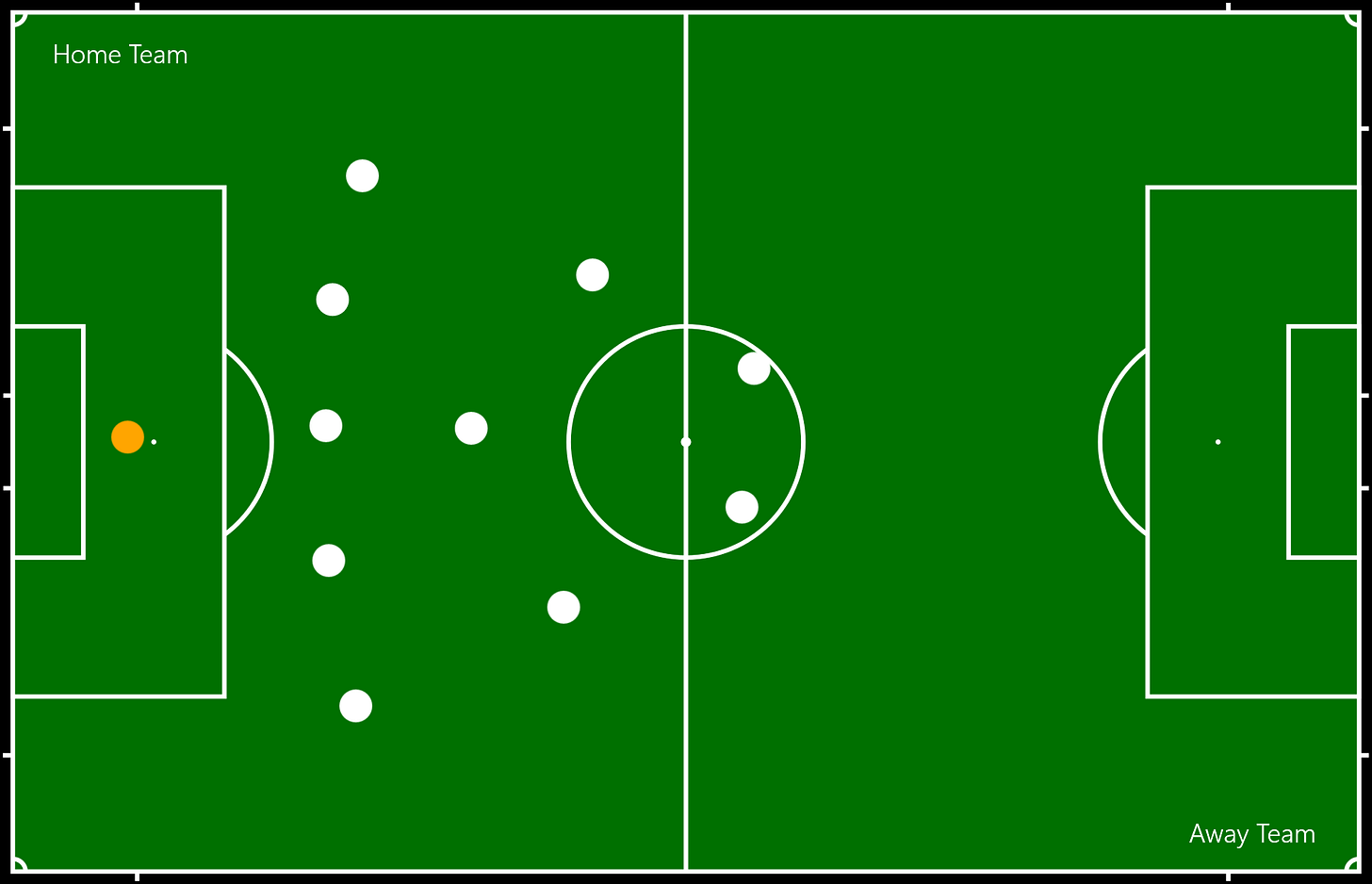
Notice how compact Spurs' shape in this phase of play is. Blocking off space centrally was key, not allowing either of Bernardo, De Bruyne or Rodri to beat Spurs with a deft through ball or a run in behind the central defenders. Both Kulusevski and Son also helped here, tucking in to aid Dier and Højbjerg with blocking off these spaces. City would have to beat Spurs with build up on the flanks (which they did expertly).
In transition, Spurs would look to isolate one of their wingers against City’s slow back three. Whether it be Son or Kulusevski, the idea was to get them the ball one on one with any of Laporte/Dias/Walker. This was heavily exploited in Spurs favor. Qualitative superiority. This was the transition shape:
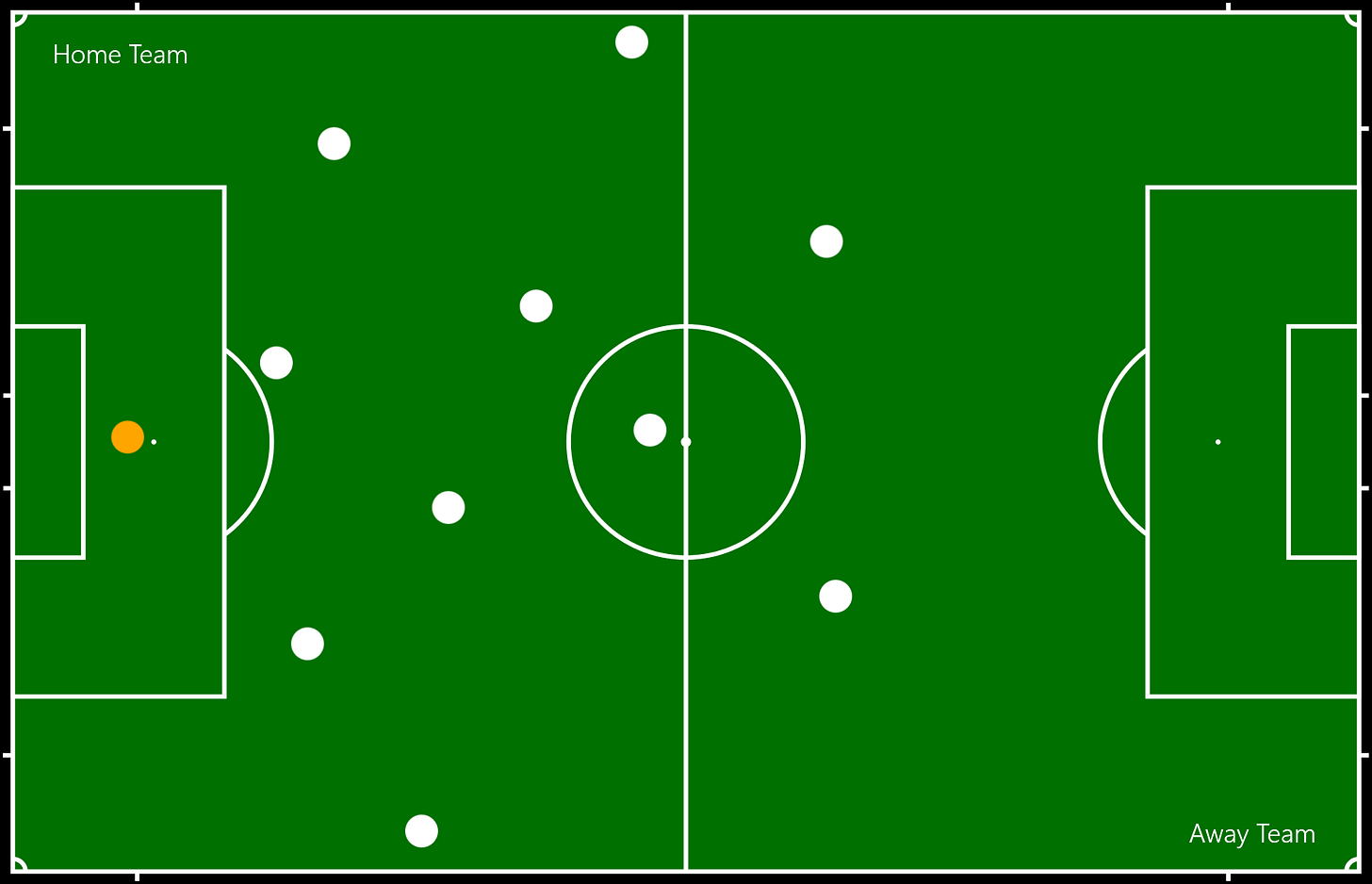
Kane would always find his way into the central mid positions in order to become Spurs primary playmaker. This also forced one of City’s defenders to constantly mark him, which if executed perfectly can result in freeing up a man or creating a favorable situation for Spurs on the counter. Kulusevski’s goal is evidence of that. Spurs’ many different shapes in this match proved that you don’t need to dominate possession to win football matches, you just need to understand how to manipulate players and spaces. Speaking of players and spaces, let’s do a quick dive into Guardiola’s City in order to get a better understanding of how shapes relate to positional play.
When it comes to Guardiola’s idea of positional play, players must be adept at understanding the requirements of each zone and be comfortable moving in and out of them freely. The factors that decide this are the location of the ball, teammates and the opposition. This explains why the shapes of his sides seem so unorthodox. Here is a look at the training pitch City uses to implement these ideas:
Guardiola is a proponent of positional play, which he gained from the Michels-Cruyffian system implemented during his time at Barcelona. Throughout his managerial career, he’s looked to evolve the style with each tenure at a new club. From the false nine to the inverted fullback, Pep has always had his finger on the pulse (and more often than not been said pulse). In the recent years at City, Pep has tinkered with using three men at the back to create numerical superiority in build up. It’s something that you’ll find with his footballing philosophy; having the ball more than the opponent. With most sides only using one or two men to press in today’s game, this idea bears fruit for his frightening City side.
Using Aymeric Laporte as his primary ball progressor from the back, City are able to manipulate the opposition's shape much easier due to his left footedness. The angles a left-sided left footed CB are capable of passing from supersede what a right footer does. This also allows for more comfort in the attacking phase, knowing that they have multiple angles covered.
City’s attacking shape looks somewhat like this:
This shape isn’t immutable, City only has one real tenet to fill here—fill the five zones across the pitch. Flanks, half spaces and central zones all have to have at least one player there in attack. So when you see City attack the opposition's box with five players, you’ll know why.
“The only important things in our game are what happens within these 4 lines. Everything else is secondary.”— Pep Guardiola
All in all, football has many different ideas that capture the minds of different figures in the sport. Both Conte and Guardiola utilize positional play ideas, one just values possession of the ball more than the other. This is the wonder of football. Ideas clashing, like two great chess players in their primes (I will have a chess article coming soon lol). I hope I have successfully explained the idea of shapes in football, because this isn’t the end of my football exploration. The game enthralls me so much, I can’t help but talk about it and express my ideals upon it.
If you would like to see more of this style of exploratory writing, just let me know @haifwing on twitter. I’m always learning and exploring the game, so I’m open to do more of these and express these ideas to others.




